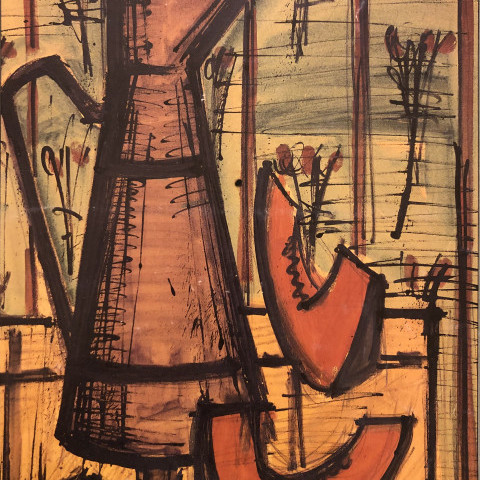Bernard Buffet was born in Paris, France on July 10, 1928. He entered the Ecole des Beaux Arts in 1944 but worked mostly in solitude. He obtained an exhibition at the Gal. des Impressions d'Art in 1947 but attracted no attention. About that time he found his individual style and in 1948 won the Prix de la Critique jointly with Bernard Lorjou. After that he enjoyed the greatest acclaim of the younger French painters, becoming the most commercially successful French painter alive.
He developed a highly mannered style immediately recognizable as his own. In sharp and spikey linear forms and with dismal greys and neutral tones he depicted emaciated figures and distorted still-lifes which seemed to express the existential and spiritual solitude of the postwar generation. Later, overwhelmed by commissions and success, his work became more stylized and decorative, losing in some measure its initial impact. He also did graphic work and book illustrations. His career culminated with a museum devoted to his work near Mishima, Japan, not in his native France.
Buffet once used his mother's torn sheets as canvases. He had the most spectacular success, claiming that "wealth aids my creative spirit; poverty does not necessarily help genius." Among his famous friends was the novelist Francoise Sagan. Unfortunately, he suffered from Parkinson's disease and had been unable to work and on October 4, 1999 at his home in Var in southern France, he committed suicide.
Source: askart.com

